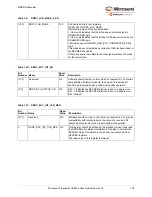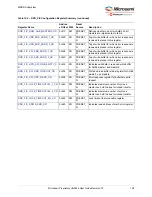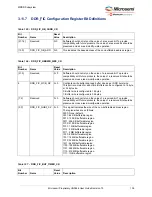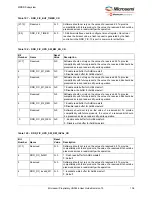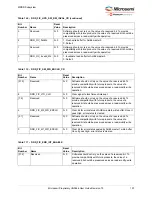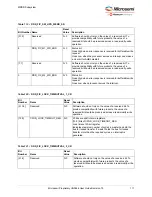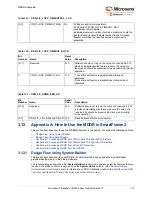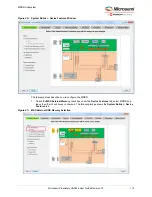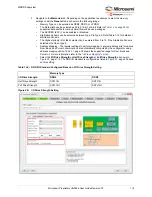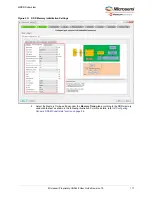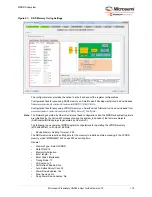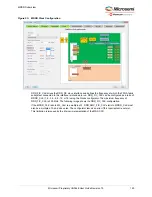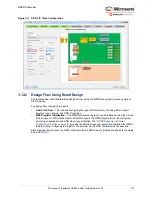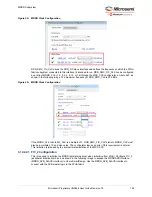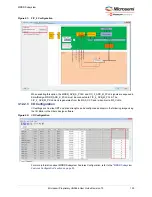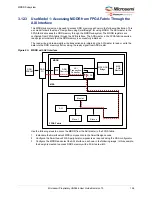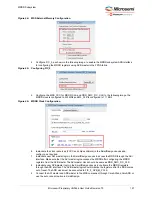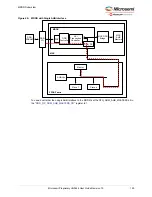
MDDR Subsystem
Microsemi Proprietary UG0446 User Guide Revision 7.0
115
3.
For only LPDDR memory, the
I/O standard
and
I/O calibration
settings are available as shown in
the following image.
•
Select
I/O standard
as
LVCMOS18
or
LPDDRI
. For Microsemi M2S_EVAL_KIT board select
LPDDRI(SSTL18) as the board is designed to use LPDDRI I/O standard.
Note:
If LVCMOS18 is selected, all IOs are configured to LVCMOS1.8 except CLK/CLK_N.CLK and CLK_N
are configured to LPDDRI standard because they are differential signals.
•
Select
I/O calibration
as ON or OFF. If I/O calibration is selected as
ON
, then the Smartfusion2
MDDR_IMP_CALIB pin must be pulled down with a resistor. For information on resistor values,
refer to the "Impedance Calibration section" in
DS0115: SmartFusion2 Pin Descriptions
.
Figure 49 •
Selecting I/O Standard as LVCMOS18 or LPDDRI
4.
Depending on the application requirement, select the Memory Initialization settings under the
Memory Initialization tab as shown in
•
Select the below performance related settings
•
Burst Length can be selected as 4, 8 or 16.
for supported burst lengths.
•
Burst order can be selected as sequential or interleaved. Refer Table 1-13 for supported burst
orders.
•
Timing mode can be selected as 1T or 2T. For more details refer to
•
CAS latency is the delay, in clock cycles, between the internal READ command and the
availability of the first bit of output data. Select the CAS latency according to the DDR memory
(Mode register) datasheet.
•
Select the below power saving mode settings. Refer to
"Power Saving Modes" on page 24
for more
details.
•
Self-Refresh Enabled
•
Auto Refresh Burst Count
•
Power down Enabled
•
Stop the clock: supported only for LPDDR
•
Deep Power down Enabled: supported only for LPDDR


